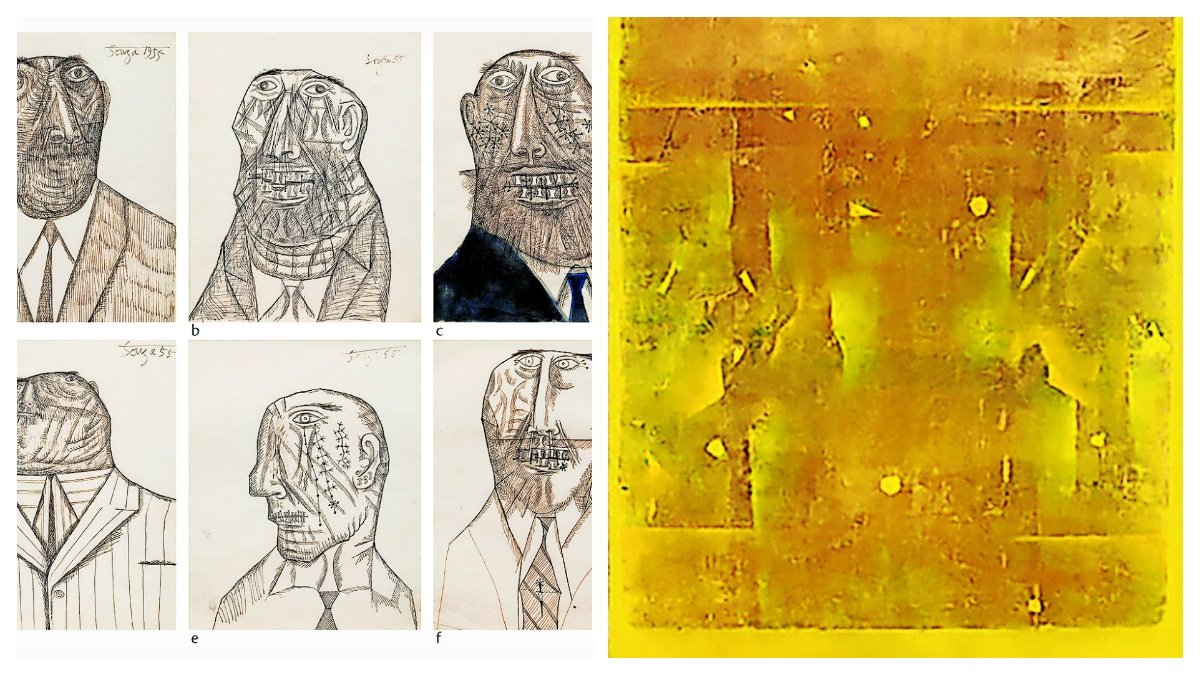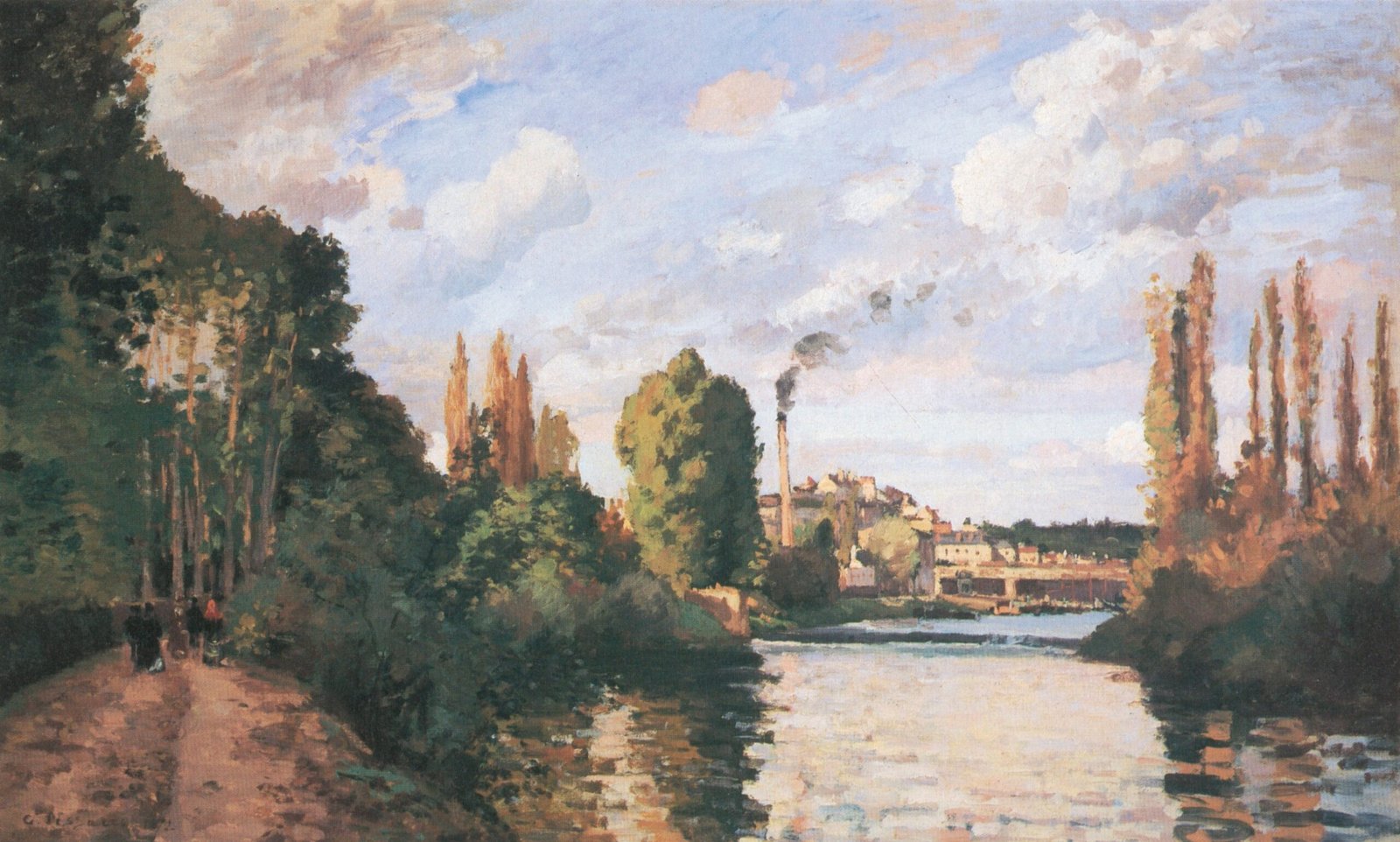Even if you don’t know the name, you’ve felt the influence of Robert Earl Paige. The artist, who has lived across the world but is now back in his home neighborhood of Woodlawn, has designed scarves for Italian fashion houses and textiles for the likes of Sears and Walmart. His fabric patterns are, in many ways, the backdrop of our world.
The Hyde Park Art Center is staging “The United Colors of Robert Earl Paige,” the largest exhibition to date of Paige’s work, through Oct. 27. Beyond fabrics, it spans clay, textiles, collage and paintings on walls and floors. To Paige, everything has the potential to be art, from a tiny scrap of cardboard to tree bark.
Paige recently sat down with WBEZ’s The Rundown podcast to talk about his path to becoming an artist, his advice for young creatives and why he still looks for beauty everywhere.
Erin Allen: You grew up in Chicago. What were your cross streets?
Robert Earl Paige: Woodlawn and 51st Street.
Were you immediately creative as a youngin’?
I was a person who collected a lot of things, you know, found objects. My mom would say, ‘Bobby, stop bringing things and put them in that top drawer.’ I was a person that was interested in things like Robert Rauschenberg and ready-made, found objects. I’m a doodler, dabbler and a tinkerer. So that’s what I really enjoyed doing. But to your point, I’ve been playing with art all my life.
What type of art were you consuming and seeing as a child?
At that point, everything was art. It didn’t occur to me that art was art. I was an explorer. I had a group of young boys that would go out in the park; I lived close to Washington Park. I’ve been fortunate enough to live near parks and near water. I’ve always been an explorer, so creativity is something that just came natural to me.
Curiosity and creativity. Really, they’re best friends.
Absolutely. Curiosity is a part of my five Cs.
Tell me, what’s the other three?
Commitment, consistency, competence, curiosity equals creativity.
I’ve heard you say the words, “Beauty is a public service.” And I would love to hear you just talk about beauty. When you’re searching for beauty, where do you find it?
You find it everywhere. As you said, I’m in pursuit of beauty. And if you think about it, you know, color is the skin of the world, and so I’m looking for it. I’m trying to turn ugliness into beauty. They say beauty is in the eyes of the beholder. But if you’re not trained to see, then it doesn’t mean anything.
Tell me about working in that more mass-produced textile space, making art when people don’t appreciate that an artist has been involved?
Textiles and fabric is part of your life from the time you get into this life and get out. The textile business is very important in a lot of ways. Everybody’s an artist, you know. You woke up this morning, you said, ‘Hmm, how do I want to present myself today?’ And that starts it. Mom goes to the grocery store and picks up that first red apple and the hunt is on. You’re not cognizant of the fact that you’re practicing a certain aesthetic.
You are an artist who seems to be getting every use out of your talent. You produce work for sale to individuals, for display at museums and you work on design partnerships with department stores. Why do you think artists should think so comprehensively about their work?
You get pigeonholed. You know, I have friends of mine that are great artists. You know, they’re painters and they have these wonderful paintings and they paint them and they paint them and they keep putting them on their wall, they keep storing them. Why not think about applying that same talent to something that can make you some money while you’re waiting to sell that million-dollar painting?
So I find that for me, it is best to explore all the substrates — whether it’s fabric, whether it’s paper, I do note cards, I’ve done shirts, you know, I paint on rocks. You know, get it out. The marketplace is very fickle. The stuff that you love, they hate. The stuff they hate, you love. It’s a mad thing. So my idea, and what I tell most artists, just do the damn thing. Get it out there. You know, just follow the work, follow the work, follow the work. Don’t be worrying about who you’re going to sell it to.
Tell me about the Hyde Park Art Center. What do you love about being here and making here?
It’s home. I was familiar with the art center because I moved in Hyde Park, 1967. So my first recollection of it was, because it was Blackstone, I wasn’t too impressed but at least they put me in a venue where there were artists. And then it happened to have the Hairy Who? exhibition and a bunch of them were at the Art Institute the same time I was there.
When I got the residency here, it gave me a real opportunity to operate as a job. I spent 35 hours a week. I don’t know any artists that spent that much time in their studio.
But what that offered me, as I said, a job. I’d get up at 8 a.m., get here at 8:15 every morning, leave about 5 p.m. or so. I established wonderful relationships with everyone and I’m sure that while the show was so wonderful and beautiful, because they saw me work my tail off. It helped everybody lift their game up. And that’s the idea. You know, that’s what association should do. They should be able to touch one, teach one. I like that idea in Hyde Park Art Center. It offered me a home to come and experiment. As an artist, most of us are concerned with two things: either money or space. And you get sick and tired of cleaning up your bed to get in it. So I was able to put up work on the wall and then close the door and leave it, but I still took it home!
You have some pretty legendary contemporaries. Visual artists Margaret Taylor Burroughs, Richard Hunt, Faith Ringgold, who recently passed away just this past weekend. You mentioned spending time with James Baldwin. How do you think about the legacy that they’ve left and your own legacy as a living legend in this realm?
Well, that’s one of Margaret’s poems: What will your legacy be? Margaret Burroughs [the co-founder of the DuSable Black History Museum] I knew very well. And my Margaret Burroughs story was [that] I was once in the west coast of Africa, in Abidjan, and I was in a Hotel Ivoire. I was going up to my room and someone said, ‘Hold the elevators, it’s Margaret Burroughs!’ I had never met her before.
But Faith Ringgold, we hung out a little bit in New York. I knew her and thank God, I got an opportunity to see her show at the MCA. I spent a day in that bad boy!
Richard Hunt, they had a beautiful article on him in New City. When I was reading it, of course, they talked about the music and so forth. He used to have, on Sunday, these salons with Baroque music and champagne.
This was in his studio?
Yeah. They were a group of us artists that hung out, but we were clowning! We were having a wonderful time. You know, so I said, ‘You can have fun.’ That’s what I wanted this show to be. I wanted to be fun and play.
I sent something to one of my colleagues and it said, ‘Don’t grow up, I think it’s a trap.’ And that has a lot to do with how I feel about things. I feel if you lose the kid in you, I think you lost a lot. People talk about happiness; I prefer to think about joy. You can be happy one minute and sad the next. But if you have joy, then you can sustain that over a longer period of time.
This interview was condensed and lightly edited for clarity.








